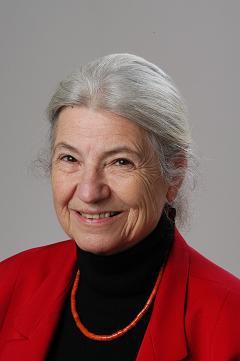
At a time when robotic science concretely divided research subjects between planning, sensing, and control, Ruzena Bajcsy insisted on bringing the disciplines together. Bajcsy realized that in order for robots to perceive their surroundings effectively they needed to act more like humans. Instead of thinking of sensing as a passive process where images and sensor measurements were acquired by static sensors, she developed robots that improved their perception of the world by actively moving their cameras and sensors and by reaching and touching. (Computer vision could not be improved, for example, by mere analysis of a static image--—instead sensors needed to move around, change their focal length or change the lighting to gather as much data from as many perspectives as possible). It seems self-evident now, but in the 1980s when Bajcsy first suggested the concept of "active perception," it revolutionized the robotics field. Later, she drew upon similar cross-disciplinary research—including computer science and biomechanics -- to overturn the way software analyzed and manipulated medical images.
Ruzena Bajcsy received her master's and Ph.D. degrees in electrical engineering from Slovak Technical University in Bratislava in 1957 and 1967, respectively. During this time she also taught math and computer science there. Bajcsy went on to Stanford where she earned a Ph.D. in computer science in 1972. She became an assistant professor at the University of Pennsylvania in 1977, and was chair of the computer and information science department 13 years later—the first woman in that position. In 1979 she founded the General Robotics, Automation, Sensing and Perception (GRASP) Lab at Penn, which remains a major lab in the field even after her "retirement" in 2001. Subsequently, Bajcsy spent two years working for the NSF before founding UC Berkeley's Center for Information Technology Research in the Interest of Society [CITRIS], where she is now director emeritus.
Throughout her career, Bajcsy has been a pioneer in machine perception, robotics, and artificial intelligence, introducing entire fields that today are taken for granted as important research areas. She is particularly well known for two concepts. The first, known as "active perception," revolutionized robotic vision and sensing. Until 1988, the paradigm in robotic vision was to interpret what one was perceiving based on the composition and computer analysis of a few images taken from static cameras and sensors. Bajcsy suggested that the more effective method of moving the sensors would help the machine gather more information and the sensors, in turn, could help streamline movement. This paradigm of vision as an active process has become the leading theory in understanding human vision as well—emphasizing the surprising cross-disciplinary nature of much of Bajcsy's work.
The second contribution for which Bajcsy is well-known, elastic matching, has transformed medical imaging. This work matches up defined points on anatomical structures and organs to automatically align, measure, and analyze the uniquely-shaped body parts of any individual. By elastically massaging such "deformed" images to match idealized medical images, a computer can identify body parts and help spot anomalies or problems. This has particularly influenced non-invasive measurements of brain structure and function.
Bajcsy's awards include: the Allen Newell Award, the Computing Research Associates Distinguished Service Award, and the ACM Distinguished Service Award. She is a member of the National Academy of Engineering and the National Academy of Science Institute of Medicine.
Information as of April 2009

